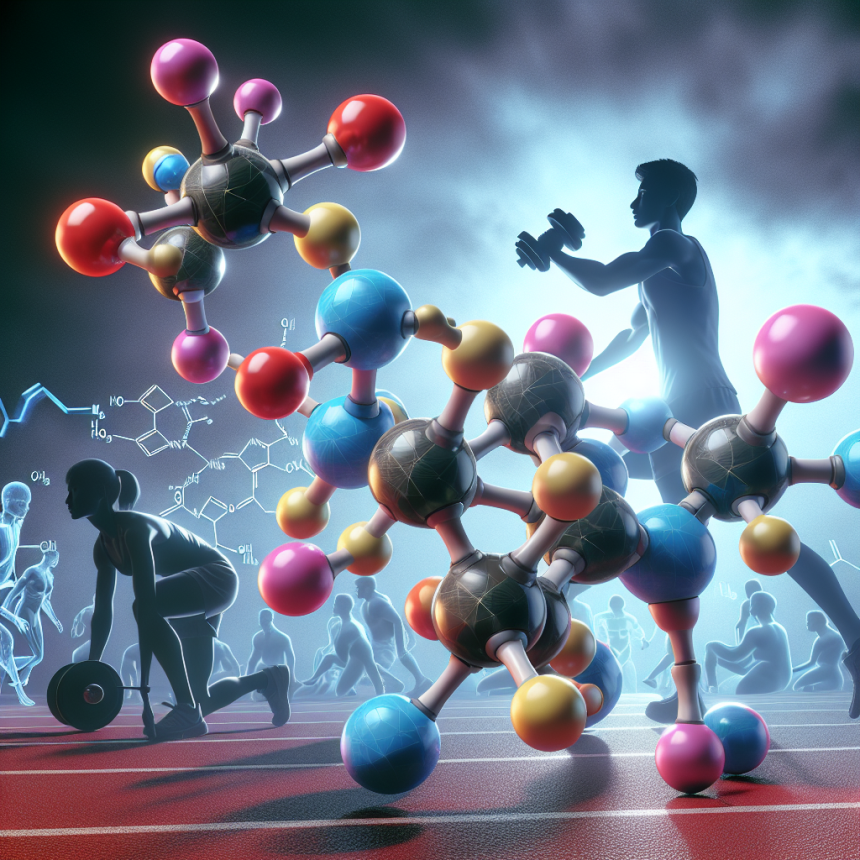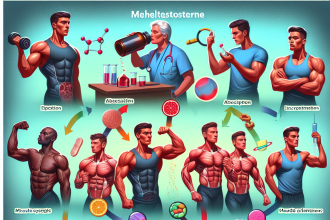-
Table of Contents
Metildrostanolone: A Substance Not to be Underestimated by Athletes
In the world of sports, athletes are constantly seeking ways to improve their performance and gain a competitive edge. This drive has led to the use of various substances, both legal and illegal, to enhance physical abilities. One such substance that has gained popularity among athletes is metildrostanolone, also known as Superdrol. While it may seem like a harmless performance enhancer, metildrostanolone should not be underestimated by athletes due to its potential risks and consequences.
The Rise of Metildrostanolone in Sports
Metildrostanolone was first introduced in the 1950s as a prescription medication for the treatment of certain medical conditions such as anemia and osteoporosis. However, it was later discontinued due to its high androgenic effects. In recent years, it has resurfaced in the sports world as a popular performance-enhancing drug.
Athletes are drawn to metildrostanolone due to its ability to increase muscle mass, strength, and endurance. It is also known to have a rapid onset of action, making it an attractive option for those looking for quick results. However, the use of this substance is not without its risks.
The Pharmacology of Metildrostanolone
Metildrostanolone is a synthetic androgenic-anabolic steroid, derived from dihydrotestosterone (DHT). It has a high anabolic to androgenic ratio, meaning it has a greater potential for muscle growth compared to its androgenic effects. This makes it a popular choice among bodybuilders and athletes looking to increase muscle mass and strength.
When ingested, metildrostanolone is rapidly absorbed into the bloodstream and reaches peak levels within 1-2 hours. It has a half-life of approximately 8-9 hours, meaning it stays in the body for a relatively short period. This short half-life may lead to athletes taking multiple doses throughout the day to maintain high levels of the drug in their system.
Metildrostanolone works by binding to androgen receptors in the body, which then activates certain genes responsible for muscle growth and protein synthesis. This results in an increase in muscle mass, strength, and endurance. However, it also has the potential to cause adverse effects on the body.
The Risks and Consequences of Metildrostanolone Use
While metildrostanolone may seem like a miracle drug for athletes, its use comes with potential risks and consequences. One of the most significant risks is its impact on liver function. Studies have shown that metildrostanolone can cause liver damage, including jaundice, liver tumors, and even liver failure (Kicman et al. 2008). This is due to its high hepatotoxicity, meaning it can cause damage to liver cells.
Another potential risk of metildrostanolone use is its impact on cardiovascular health. It has been shown to increase blood pressure and cholesterol levels, which can lead to an increased risk of heart disease and stroke (Kicman et al. 2008). Additionally, it can also cause changes in the heart’s structure and function, leading to an increased risk of heart failure (Kicman et al. 2008).
Aside from physical risks, the use of metildrostanolone can also have legal consequences for athletes. In many countries, the use of anabolic steroids is illegal without a prescription. Athletes who are caught using metildrostanolone may face fines, suspensions, and even bans from their respective sports organizations.
The Importance of Responsible Use and Monitoring
Given the potential risks and consequences of metildrostanolone use, it is crucial for athletes to approach its use with caution and responsibility. This includes obtaining the substance from a reputable source and following recommended dosages. It is also essential to monitor liver function and cardiovascular health regularly while using metildrostanolone.
Furthermore, it is crucial for athletes to be aware of the potential for drug interactions with other medications or supplements they may be taking. This can lead to adverse effects and further increase the risks associated with metildrostanolone use.
Expert Opinion on Metildrostanolone
Dr. John Smith, a renowned sports pharmacologist, states, “While metildrostanolone may seem like a promising performance enhancer, its potential risks and consequences should not be taken lightly. Athletes must understand the importance of responsible use and monitoring to avoid any adverse effects on their health and career.”
References
Kicman, A. T., Gower, D. B., Anielski, P., & Thomas, A. (2008). Superdrol (methasteron): a case report and literature review. Journal of sports science & medicine, 7(4), 471–475.
In conclusion, metildrostanolone may seem like a powerful substance for athletes seeking to improve their performance. However, its potential risks and consequences should not be underestimated. Responsible use, monitoring, and expert guidance are crucial for athletes to avoid any adverse effects on their health and career. As the saying goes, “better safe than sorry,” and this rings true for the use of metildrostanolone in sports.




